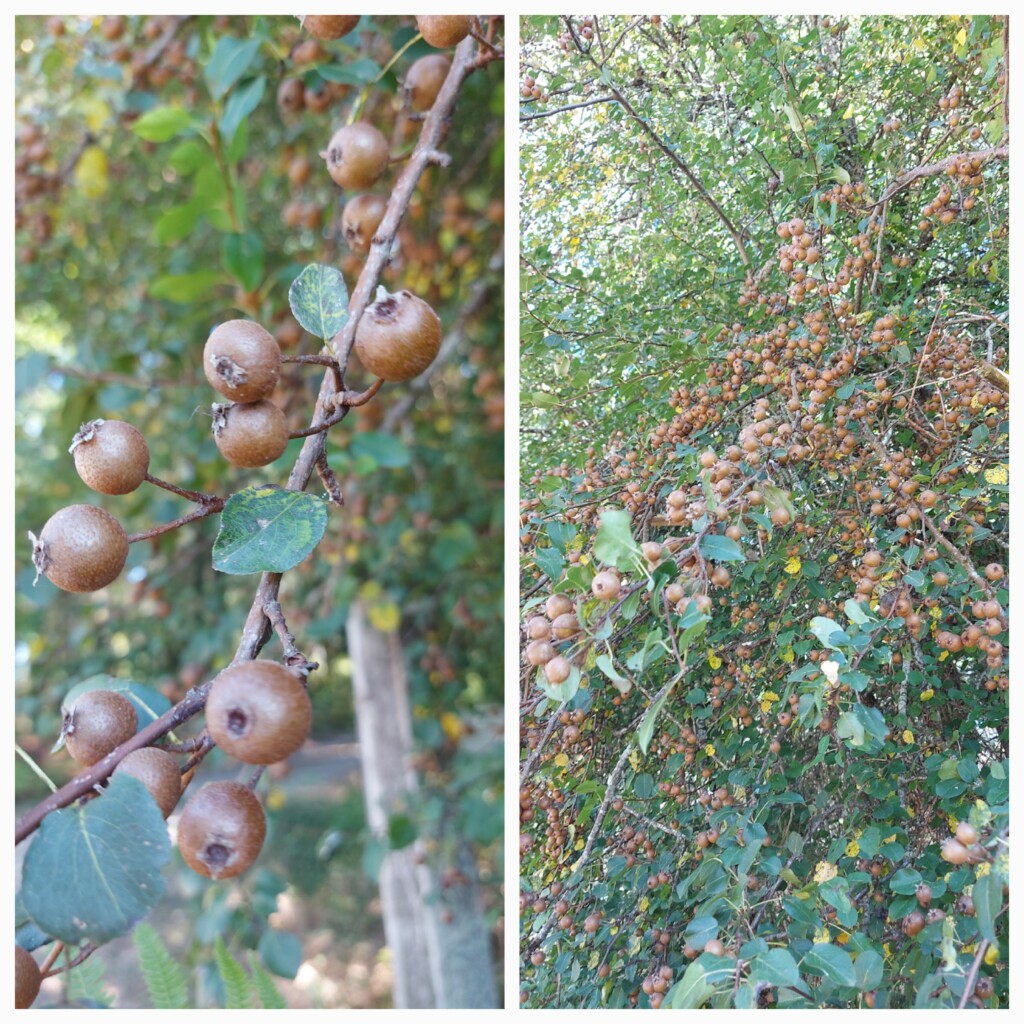PLYMOUTH PEAR AT LE MOULIN DE PENSOL
It has taken us 6 years to correctly identify this tree. It flowered and fruited profusely in our first year here and we tentatively made jelly, thinking it was a crab apple. The jelly was delicious with notes of cinnamon and nutmeg although none was added. The jars were labelled “Probably crabapple jelly 2019” and “fairly sure it is crabapple jelly 2019”.
Although we survived the eating of the jelly it wasn’t a crabapple. What we had was a Plymouth Pear, Pyrus cordata.
Named after the place in the UK where it was found in the 19th century, the Plymouth Pear is one of Britain’s rarest trees. Its distribution is restricted to Plymouth and Truro. It has an interesting mechanism to prevent self-pollinisation called “self-incompatability”, which is probably one of the reasons it remains pretty rare. However, we have it everywhere on our land, although Brittany is said to be the stronghold in France.
It is also found in Northwest Spain and Portugal. It enjoys sunshine and indeed at Le Moulin, it tends to be found on the edges of woodland. I would suggest that’s another reason it might not love the current climate of the UK! It will be interesting to see if it spreads north as climate change unfolds.
Trees bearing flowers and then fruit tend to be very good for wildlife and our new pear friend is no exception. However, the flowers have a trick up their sleeve and are said to smell of rotting scampi or wet carpet! Delightful. I haven’t yet noticed this and look forward to giving them a cautious sniff next year.
The Woodland Trust has some interesting facts on the Plymouth Pear including that keen gardener Arthur Watson gifted a Plymouth pear he had nurtured for over 20 years to the Queen for her Diamond Jubilee. It now grows in a corner of the palace garden.
I was interested in the second part of the Latin name “cordata” which is the same as the small leaved lime Tilia cordata. So I looked this up and found it means “heart-shaped” which refers in both cases to the leaves.
So there we are – the wildlife of Le Moulin is the gift that keeps on giving, and we feel very privileged to have this interesting species on our land. I will have another go at making jam this year, but will label it with a bit more confidence and accuracy this time!






